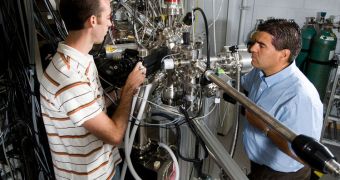Fission reactors are capable of producing large amounts of energy using radioactive materials, but they also pose an incredibly danger to their surroundings and workers. Their byproducts are also very toxic, and incredibly difficult to handle, and so physicists have been working on developing technologies to replace them for decades. Their best bet is now nuclear fusion, a method of producing energy that is cleaner than fission, and also more efficient in terms of total energy output.
But developing nuclear fusion technology has proven to be very hard, with experts hitting roadblocks whichever way they turned. Issues confront those who want to learn how to trigger the reaction itself, as well as those who aim at creating the hardware associated with it. Developing a reactor that is suited to the conditions needed for nuclear fusion is equally as important as developing the technology to start fusing atoms together, scientists believe. By observing the intricate mechanisms of interaction that occur between hot plasma and surfaces facing the plasma inside a thermonuclear fusion reactor, experts at the Purdue University have recently taken a huge step forward in this field of research.
The team's success means that the goal of developing reactor coatings which can withstand the massive temperatures and pressures needed to trigger and sustain nuclear fusion is closer than ever. According to Purdue engineers, the “plasma-material interface” is one of the crucial regions of a future reactor, and as such deserves a lot of attention. Purdue assistant professor of nuclear engineering Jean Paul Allain says that the goal he and his team have is to produce nanotechnology-enabled materials that can withstand the immense radiation damage triggered by nuclear fusion.
“We now have an understanding of how the lithiated graphite controls the recycling of hydrogen. This is the first time that anyone has looked systematically at the chemistry and physics of pumping by the lithiated graphite. We are learning, at the atomic level, exactly how it is pumped and what dictates the binding of deuterium [a fuel for fusion reactions] in this lithiated graphite. So we now have improved insight on how to recondition the surfaces of the tokamak,” the expert explains. Details of the team's progress were first presented in May, at the 19th International Conference on Plasma-Surface Interactions.

 14 DAY TRIAL //
14 DAY TRIAL //